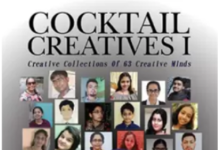On June 15th, 1985 a new door opened to the magical world of animation films. Animators and directors Miyazaki Hayao and Takahata Isao and producer Suzuki Toshio came together to change the artistic credibility of Japanese animation film studios that up until then worked in favour of commercial considerations. With critical and popular acclaim on their feature films, Studio Ghibli has produced some of Japan’s biggest box office hits.
Here is a sneak-peak into the world of Studio Ghibli since its inception, the works that still take the world by a storm, and the minds behind the heart touching stories:
NEW BEGINNINGS TO INDEPENDENT ERA
Thirty-five years ago, the group of founders Miyazaki Hayao, Takahata Isao, and Suzuki Toshio embarked on a journey to deliver cinematic feature films that would draw an audience from all ages. However, it was almost two decades earlier in the 1960s when Takahata and Miyazaki met while working for Tôei Dôga, a Japanese animation studio. It was in 1985 with Tokuma Shoten – a Tokyo-based publishing company’s funding that Takahata, Miyazaki, and Suzuki started their venture in the suburbs of Tokyo – a small production studio: Studio Ghibli.
As a subsidiary of Tokuma Shoten Co. Ltd., Miyazaki and Takahata released their first feature film Nausicaä of the Valley of the Wind in 1984, based on Miyazaki’s manga of the same name produced by Topcraft. The animation studio (Topcraft) went bankrupt in 1985, selling it to Suzuki and Takahata. Hence, it was renamed “Studio Ghibli”. With Nausicaä of the Valley of the Wind’s success, Studio Ghibli was able to produce their next production Laputa: Castle in the Sky in 1986.
As Studio Ghibli was formalized and accumulated some financial success, Miyazaki stated a need for hiring new staff, to train and nurture them. An attractive workplace with improved work conditions. A proper corporate structure to avoid creative stagnation.
Though Ghibli distributed much of its work in Japan via Toho, a film distributor, they did not focus much on International distribution and commercial success. Whatever was distributed via Streamline Pictures, did not receive a wide theatrical release.
In 1986, when a badly edited version of Nausicaä of the Valley of the Wind (U.S. Version: Warriors of the Wind) was released, Miyazaki did not allow any of his films to be released in the West for many years. That ended in 1996 with a deal signed with Walt Disney Studios to distribute Studio Ghibli movies. It was the same year as Miyazaki’s blockbuster film Princess Mononoke (Mononoke-hime).
In October 2001, Miyazaki-designed Ghibli Museum was inaugurated in Mitaka, Japan. Exclusive Studio Ghibli’s short films and other films and show animations were a major attraction of the museum.
Taking over Suzuki’s position as the President he held since 2005, Koji Hoshino, former president of Walt Disney Japan, became the president of Studio Ghibli on February 01, 2008.
Ghibli Museum films House Hunting and Mon Mon the Water Spider were screened at the Carnegie Hall Citywise Japan NYC Festival on March 26th, 2011.
Miyazaki confirmed his retirement in a press conference on September 1, 2013, but returned in October 2017 to direct a film for his grandson.
Retiring from his position as a producer and assuming the role of general manager, Toshiho Suzuki was replaced by Yoshiaki Nishimura in March 2014.
On November 28th, 2017, Hoshino was replaced by Ghibli Museum director Kiyofumi Nakajima as the new Studio Ghibli president and Hoshino assumed the role of Chairman of Studio Ghibli.
WORKS
One of the most renowned and loved animation studios in the world, Studio Ghibli has produced several tear-jerking films. The depth through which they explore human emotions, giving every character, including the villains, makes their poetic stories unlike any other.
Home to some of the most adorable characters, take a guess how many works out of these have you watched
- Nausicaä of the Valley of the Wind (1984) 16. Tales of Earthsea (2006)
- Castle in the Sky (1986) 17. Ponyo (2008)
- Grave of Fireflies (1988) 18. Arrietty (2010)
- My Neighbour Totoro (1988) 19. From Up the Poppy Hill (2011)
- Kiki’s Delivery Service (1989) 20. The Wind Rises (2013)
- Only Yesterday (1991) 21. The Tale of the Princess Kaguya
(2013)
- Porco Rosso (1992) 22. When Marnie Was There (2014)
- Ocean Waves (1993) 23. Earwig and the Witch (2020)
- Pom Poko (1994) 24. How do you live? (TBA)
- Whisper of the Heart (1995)
- Princess Mononoke (1997)
- My Neighbours the Yamadas (1999)
- Spirited Away (2001)
- The Cat Returns (2002)
- Howl’s Moving Castle (2004)
Their only anime television series Ronja, the Robber’s Daughter aired in 2014 with Miyazaki Gorō as the director. Their short films work includes over 20 films for theatrical releases, television, and Ghibli Museum. Apart from that Studio Ghibli has produced 17 commercials, 5 video games, 1 stage production, and 16 films as a part of Ghibli Gakujutsu on DVD or Blu-ray in Japan. There is a truckload of other related work under their belt. All the while maintaining the same essence and top-notch cinematography.
KEY FACTS ABOUT THE ORGANIZATION
Studio Ghibli is home to over 300 employees with several notable animators and character designers working for them. Including Masashi Ando, Makiko Futaki, Katsuya Kondō, Atsushi Takahashi to name a few.
At present, Studio Ghibli is headed by Koji Hoshino as the Chairman, Kiyofumi Nakajima as the President, Hayao Miyazaki as the Director, and Toshio Suzuki as the Executive director.
With Tokuma Shoten as its parent company from 1985 to 2005, Studio Ghibli became an independent studio serving worldwide.
Studio Ghibli has a net income of ¥1.426 billion as of 2011 and Total assets worth ¥15.77 billion as of 2011 from its products in form of Animated feature films (anime), television films, commercials, live-action films.
The word Ghibli was chosen by Miyazaki because of his love for Italy and planes. Ghibli in Italian means “Hot Sahara Wind” and was also inspired by a surveillance aircraft designed by Italy during World War II – Caproni Ca.309 Ghibli.
WHY STUDIO GHIBLI IS WIDELY LOVED?
The world is not black and white, neither is an organization. Though it is hard to find what Studio Ghibli could’ve done differently, there is no denying the fact that stands out – even after years in the studio business, Studio Ghibli still worked on hand–to-mouth ideology for years. It’s almost impossible to believe that a studio that widely loved was ready to gamble it all on one film and wait to see if it succeeded to earn profits. Though maybe it was the animators and the staffs’ immense confidence in their skills and their audience that they made it through with some significant achievement.
Another fact that stands apart is that unlike, many studios, Studio Ghibli did not care much about International commercial success! In the beginning, Ghibli was purely focused on producing high-quality feature films that captured human emotions and their essence in the finest details. Needless to say, even after years that remains their top priority.
Perhaps what stands out the most is the time Studio Ghibli takes in producing a film. Since all scenes are hand-drawn, unlike some other studios that can produce films in shorter duration, Studio Ghibli extends the time between two releases.
While some would call such risk-taking behaviours a demerit of their workplace, Studio Ghibli has never failed to impress their audience. That is why their merits make them stand apart.
Be it No-face or a humongous cat named Totoro, Ghibli has produced some of the most unique characters and unique stories. A new adventure always awaits to whisk the audience away and leave them breathless and teary-eyed in the end. Each story is not only entertaining but educational, always leaving the audience with a life lesson. It is their hand-drawn art that captures the beauty of childhood and its nostalgia for adults.
It goes without saying Studio Ghibli not only has the most magnificent art and cinematography but just the perfect music to rile up the right emotions. Perhaps it’s their impressive attention to details that always pay off their risky gamble of giving it all.
Taking advantage of the perfect opportunities like collaboration with Walt Disney Studios, responding to high demand for goodies that feature their most beloved characters, Studio Ghibli has made a legacy for itself. A legacy strong enough to ward off the studios that can potentially replace them by producing 3D movies in a shorter time, fighting off piracy threats, and maintaining the beauty of hand-drawn 2D art.
No matter what your age, what you prefer in terms of genres, Studio Ghibli with its Totoro cat mascot probably has something in store for you. If you haven’t explored the world of Studio Ghibli yet, you’re sure to fall in love with their work once you do.
Author Bio: Disha Walia is a writer, editor for those who have trouble putting thoughts into words, and a lifelong storyteller. As a Psychology graduate with a Master’s degree in English, she loves exploring the unknown world of words with an interdisciplinary approach. She has a love for hobbies that focus on finer details, creativity, and intriguing depths.
















